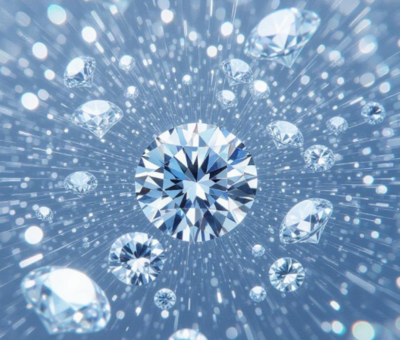ARTICLE AD BOX

Diamond rain falls on ice giants Uranus and Neptune, where intense pressure and heat transform methane into crystallizing diamonds. Scientists recreate these conditions in labs, discovering nano-diamonds form and sink, generating internal heat and influencing the planets' complex magnetic fields. This phenomenon may also occur on exoplanets.
The universe is filled with mysteries that seem like they belong in science fiction, and among the most dazzling is the existence of a planet where diamonds literally fall like rain.
While people on Earth are struggling with rising prices of precious metals like gold, far out in the solar system, there are planets where exquisite gems aren’t just treasured possessions, they are natural daily events like mere air and sunlight. Scientists have used advanced experiments and high-powered simulations to discover that some of the solar system’s ice giants, specifically Uranus and Neptune, experience diamond rain deep within their atmospheres.
The richest planet with diamond rain
Uranus and Neptune, known as the ice giants, have always surprised astronomers and researchers for their unusual atmospheres and special chemical compositions. Recent studies led by the SLAC National Accelerator Laboratory have confirmed that these planets undergo an extraordinary process where carbon atoms from methane gas crystallise into tiny diamonds under intense pressure and heat. These diamonds then fall like rain through the dense atmospheres toward the planets' cores.
These planets are mostly made of water, ammonia, and hydrocarbons. Methane (CH₄) is especially important because it contains carbon, the most essential building block of diamonds. Deep inside Uranus and Neptune, pressure reaches millions of times that of Earth’s atmosphere, and temperatures soar to thousands of degrees.Under these extreme conditions, methane molecules break apart, releasing carbon atoms.
These carbons then bond together, forming crystalline diamond structures on a gaint scale, similar to how diamonds form within the Earth, but at much higher intensity, and over the span of many years, they can also grow in size.

Diamond rain-- Representative Image
Scientists uncover this mystery using advanced technology
Since no spacecraft has yet landed on these distant planets, scientists have recreated these extreme environments in laboratories on Earth to study diamond formation. By using powerful X-ray lasers and diamond anvil cells, they simulate the extremel high pressure conditions and scorching temperatures found inside Uranus and Neptune.In these experiments scientists found out that nano-sized diamonds form at shallower depths than previously predicted. These tiny diamonds slowly sink through the layers of the planets in a process what researchers call “diamond rain,” which generates internal heat and may influence the strange magnetic fields of these planets.While the Earth’s magnetic field, is relatively uniform and generated by a molten iron core, Uranus and Neptune have more difficult, complex, asymmetric magnetic fields.Scientists believe that the movement of diamonds and “conductive ices” beneath the planets’ surfaces causes electrical currents, creating these unusual magnetic effects.
Beyond Uranus and Neptune, can diamond rain happen on other planets?
The diamond rain phenomenon may extend beyond just the ice giants in our solar system. Researchers suggest that smaller exoplanets called “mini-Neptunes”—planets not found in our solar system but common elsewhere—might also experience diamond precipitation.
Over millions of years, these diamonds may increase in size, potentially creating gem-sized stones of incredible magnitude within the planet's depths.
The diamond cycle and Icey planet’s inner life
The continuous formation, descent, and possible vaporisation of these diamonds create a unique “diamond cycle” that importantly influences the inner life of Uranus and Neptune. Although these planets are far from our reach, modern science is steadily unveiling their majestic and rare phenomena, reminding us of the universe’s boundless wonders.

Diamond rain-- Representative Image
Real life applications of research on diamond rain
Creating lab diamonds: A similar application is also used in creatinmg lab diamonds, by propagating high temperature on chemical vapours in the lab such that they match conditions inside the core of a planet.Research and medicine: Scientists have discovered ways to create tiny diamonds called nanodiamonds in the lab by using intense lasers to recreate the extreme pressure and heat found deep inside planets like Neptune. These nanodiamonds have exciting uses in medicine, electronics, and even quantum computing. Moreover, by studying this in the lab, scientists hope to better understand magnetic fields and energy flows, which could have implications for Earth and future technology.

 12 hours ago
5
12 hours ago
5









 English (US) ·
English (US) ·